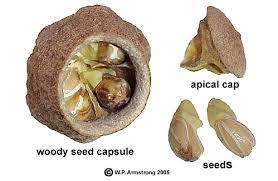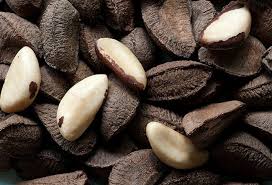Something to worry about if you live in Alaska:
Ever wonder what happened to Justin Bieber? Discovered at the age of 13, he went through drugs, depression, Lyme disease, mononucleosis...then found God, wife...Hailey Bailey, happiness, is on tour and will turn 28 tomorrow. Here he is with Baby.
So I picked crunchy nuts as my topic of today. Turned out that the title is flawed. Nuts works as a statement, but not as what you consume. Did you know National Almond Day was February 16?
- Not a nut.
- Filled with vitamin E, magnesium, phosphorous, riboflavin, biotin, calcium and fiber.
- Claimed by the FDA to reduce heart disease if you eat 1.5 ounces/day.
- Anyone tell you how many almonds you need to daily eat to meet that requirement? 35!!!
- This weight of almonds has 20 grams of fat, but mostly unsaturated, and supposedly good for your health.
- Also combats obesity, diabetes and lowers the risk of cancer because of antioxidant and anti-inflammatory benefits.
- First grown in Iran back in 4000 BC.
- Were found in King Tut's tomb.
- Became a farm crop soon after the Gold Rush began, and today, 80% of almonds are grown in California.
- Worth nearly $6 billion/year.
- Did you know that this state produces a third of all the country's vegetables and two-thirds of fruits/nuts?
- One major problem is that it takes 3 gallons (including natural rainfall) of water to produce one almond (including hull and shell). Thus, your daily FDA intake would require around a hundred gallons of water.
- In comparison, it takes 15 gallons of water to help generate 1 kilowatt-hour of electricity. Thus, a 100 watt lightbulb can be on for 10 hours to, in effect, use 15 gallons of water.
- Agriculture uses 80% of Colorado River water, which has reduced its flow by 20% since the current 20-year megadrought, where the two largest reservoirs in the USA, filled with Colorado River water, this year has reached their lowest levels ever. How low? Lake Mead is 140 feet below its 2000 level when it was considered full. This is the height of the Statue of Liberty.
What do you know about cashews?
- Native to Brazil.
- Most of the production from the Ivory Coast and India. No commercial ag in the U.S.
- Are not nuts.
- Cashews are non-toxic AFTER roasting, but the shell consists of urusiol, which causes dermatitis.
- Has to be processed by hand.
- Rich in vitamin K, fiber, amino acids, omega-3 fatty acids and a range of minerals like iron, plus is good for digestion. Good for your blood. No sodium. Lowers blood pressure. Reduces cholesterol. Strengthens bones. Good for diet if you want to lose weight. Strengthens immune system.
- Like almond, there is such a thing as cashew milk, which is a good dairy-free substitute for cow's milk.
- The "apple" surrounding the nut and shell can be consumed, and is a good source of antioxidants. Can be used for jam and juice.
- Incidentally, did you know that omega-3 fatty acids are good for you, but that omega-6 fatty acids links to inflammation and other chronic diseases. Cashews have less of the 6 than peanuts.
- Also, did you know that cashews are safe for dogs, but that macadamia nuts are NOT!!!
- 18 cashew nuts will satisfy 10% of your daily protein requirement.
- Can cause certain allergies and produce digestive gas if eaten to excess.
Pistachios also will surprise you.
- A member of the cashew family and is not a nut.
- Goes back to 6750 BC during the Bronze Age in what is now Uzbekistan.
- Has long been food for the royalty.
- Yesterday was National Pistachio Day.
- Why is it relatively expensive? Peanuts are ready to harvest in 150 days. Pistachio trees take 15-20 years to produce the first crop. Try Amazon.com.
- You click above to see how healthy pistachios are, so to the above add good for gut bacteria and lower blood sugar levels.
- Some are allergic to this product, where the cause are fructans.
- California makes the U.S.now the second-biggest supplier of pistachio. Iran still is #1.
- Here is the story:
- I grew up with red pistachios from Iran. I today worry that this was Red Dye #2, but I'm still alive and the taste of pistachios in my youth was so much better than today. Whatever, red dye was applied because these shells looked stained. In the U.S. the harvesting system was perfected to eliminate stains, so coloring them red was not necessary.
- However, in 1979 came the Iranian hostage crisis and pistachios were embargoed, and now and then were still banned until 2011.
- So California came into prominence and now grows 98% of this product in the U.S.
- This pistachio lacks that Iranian taste. Or maybe I'm just imagining this.
- The traditional Italian spumoni ice cream uses pistachios.
I should have stopped after almonds, but because I'm this far, let me end with my second favorite, Brazil nuts, which are seeds, like my #1, macadiamias.
- First discovered in Venezuela in the early 1800s.
- Then why Brazil? Because this seed was exported from that country.
- You'd never guess the largest producer? Bolivia.
- There are 250 different species.
- The woody fruit the size of a cannonball falls to the ground, containing up to 25 edible seeds.
- The tree can be 150 feet tall and live for a thousand years.
- Producers don't plant trees. They depend on a rodent to do this, for they bury excess, which eventually starts to grow, and don't bear cannonballs for at least 15 years. A good tree can bear 6000 nuts.
- Same health benefits as the above, but distinctive in also providing selenium, an antioxidant to reduce inflammation. Apparently one billion people worldwide have selenium deficiency, so consuming Brazilian nuts would be a cure. Also helps improve your hair and build stronger muscles. Boosts testosterone and reduces anxiety. Aids in memory loss.
- Store in refrigerator.
So what are nuts? Can you believe that peanuts are not nuts? They belong to the pea family. Macadamia nut is also not a nut, it is a seed. Some true nuts include acorns, chestnuts and hazelnuts. Cashews and pistachios are drupes. The difficulty comes in the classification of walnuts and pecans, which are said to be be nut-like drupes, or drupaceous nuts. Drupes are prominent. We eat the apple part of drupes, peaches and mangoes, and throw away the seed or "nut."
So I'll keep the title and won't change it to DRUPES. And, incidentally, did you know that a watermelon is a berry, like bananas? Also strawberries are not berries, they are pseudocarps. Now you're totally confused because eggplants, tomatoes and avocados are botanically classified as berries. Coffee is a drupe.
I'll end this posting with something on Unchained Melody, which was written for a 1955 film, Unchained. There were four prominent early versions by Les Baxter, Al Hibbler, Roy Hamilton and Liberace. There have been 1500 recordings by 670 artists. The one that became most popular was by The Righteous Brothers in 1965. Made yet another appearance in the 1990 Ghost. Was named #27 on AFI's 100 songs list. Here is a more recent performance featuring 600 military musicians from 11 nations in Bremen, Germany.
-

























Comments
Post a Comment